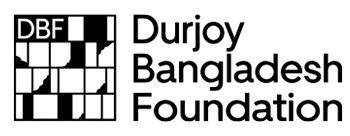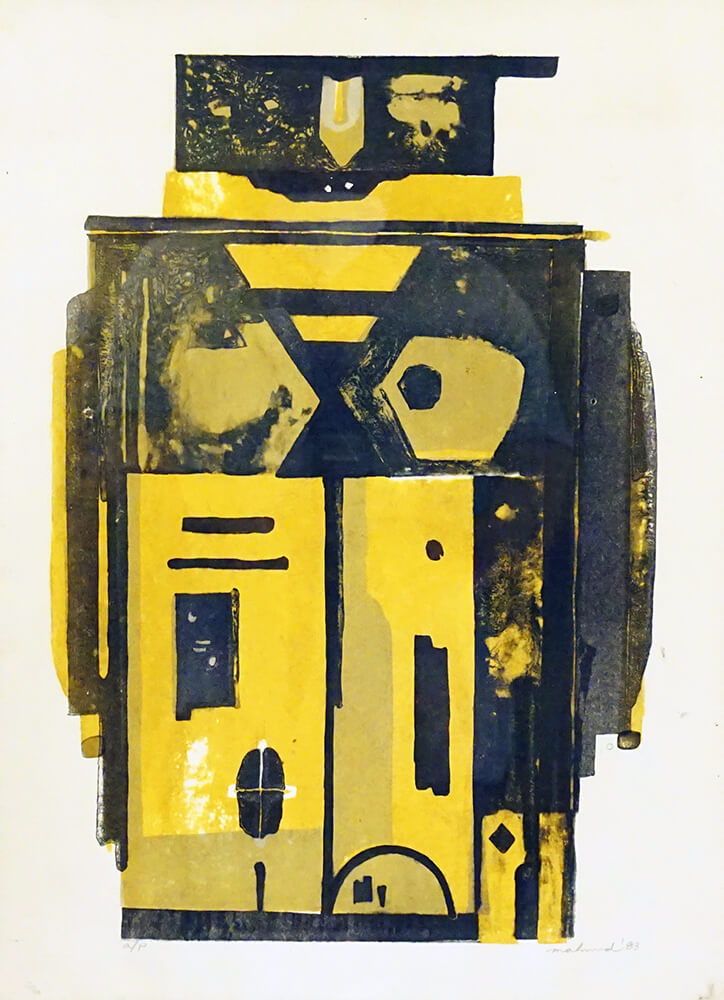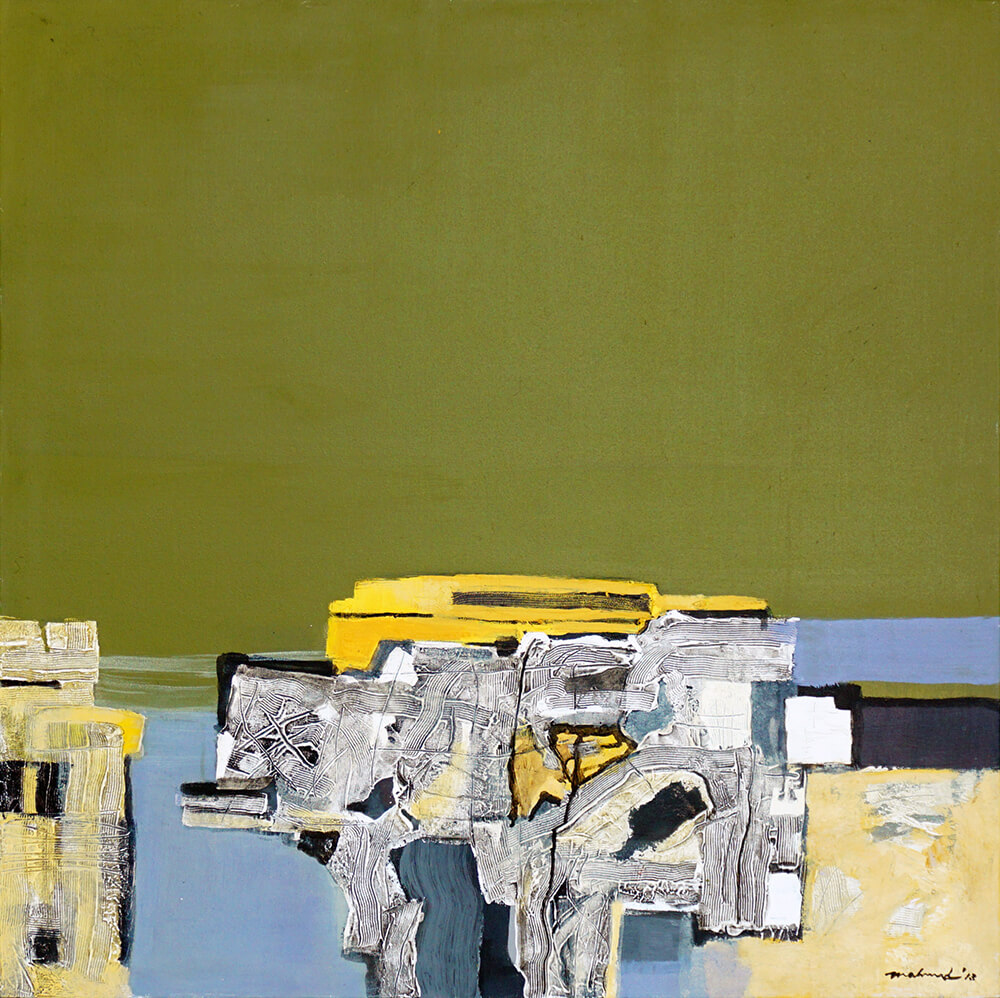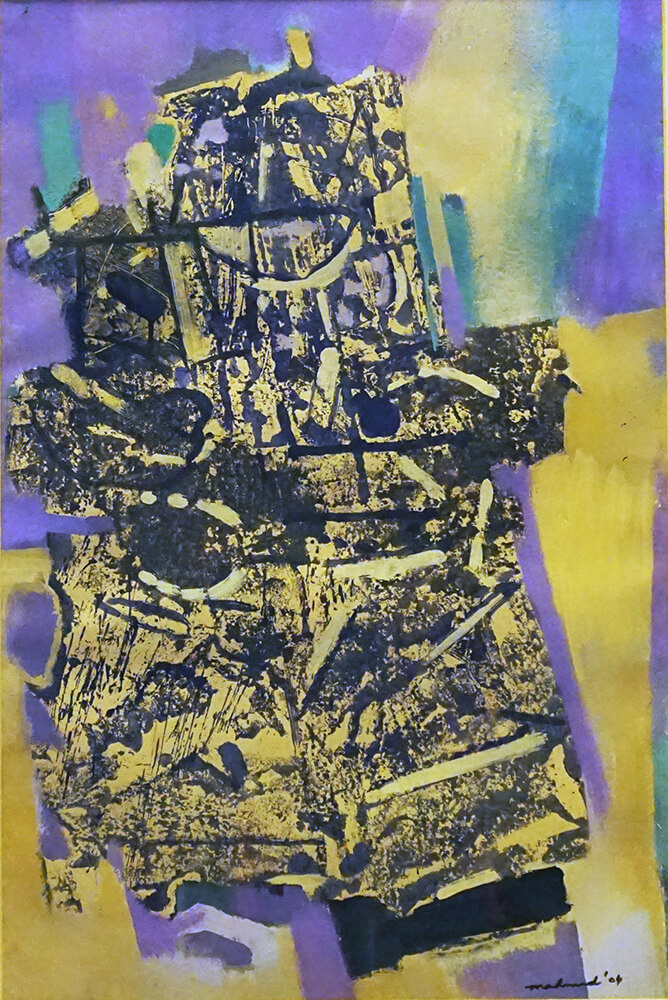In this 2006 painting, Mahmudul Haque forms a bond between reality and imagination. On a 3feet by 3 feet canvas, he adds acrylic to bring out the mystery of life. He is fearless in his choice and yet calculative. He uses warm background, and adds the boldness of the dark colors, and captures his love for the beauty of nature. He takes inspiration from nature yet hides behind abstraction. His love for bold lines, purposeful use of color, and unusual form are hard to miss in here. It is his confession yet he doesn’t reveal his true nature.

Mahmudul Haque
Mahmudul Haque, a prominent artist of Bangladesh was born in 1945 in Bagerhat, Bangladesh. His introduction to art was as a child through illustrations in his textbooks. His upbringing played an important role in becoming an artist. His love and attraction to colors and form developed at an early age which resulted in his enrolling in the Government Art Institute in Dhaka. He completed his honors degree in 1968. He went to Japan for a four-year post-graduation in printmaking from the University of Tsukuba, Japan, in 1984 upon receiving a government scholarship.
He joined Fine Arts Institute, Dhaka University in 1969 and retired in 2010 as a professor in the department of printmaking. He also served as a teacher in Japan, the USA, Pakistan, Nepal, and India. In 1998, he became the director of the then Institute of Fine Art and in 2004, he was appointed director-general of the Bangladesh National Museum.
His many awards are the Best Painting Award, Tsuchiura City, Japan (1982), the Bangladesh Shilpakala Academy Award (1992), Honourable Mention Award, Asian Art Biennale (1991 to 1997), Lalit Kala Academy Purchase Award, India (1994), 12th Kuwait International Biennale Award (1996) and S M Sultan Padak (2006). Mahmudul Haque lives and works in Dhaka.
Untitled
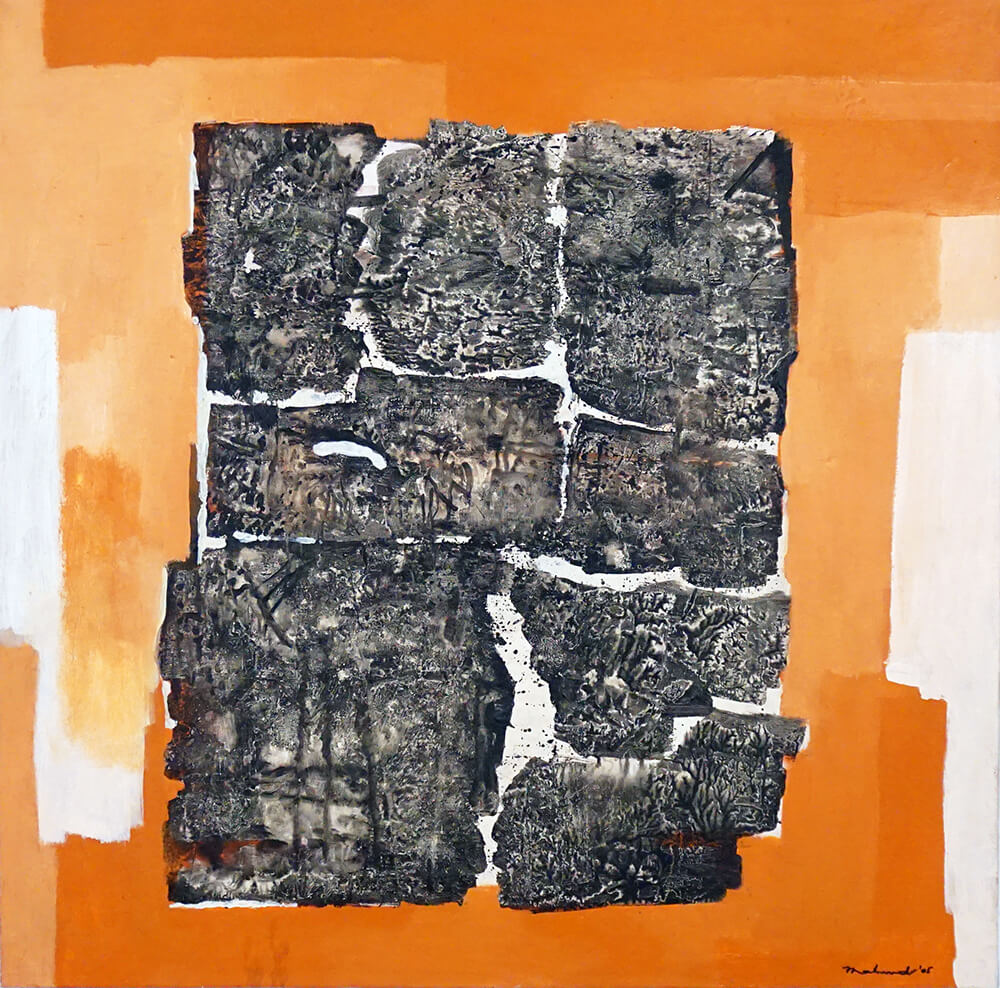
Artist Art Style
The journey of becoming an artist started at an early age through making designs on pillow covers and Kanthas for village people. Slowly his aspiration for becoming a doctor or engineer changed and turned into a dream of becoming an artist. Many great artists, painters have inspired him but he found his true nature and language of art through Hashem Khan, Kazi Abdul Baset, and Kibria. Inspired by them he adopted the route of abstraction and created an area where reality mixes with dreams. Master artists like Van Gogh, Matisse, Picasso, Miro, and Rothko has a huge impact on him. He learned to adopt some of their techniques and was inspired by their lives and works.
